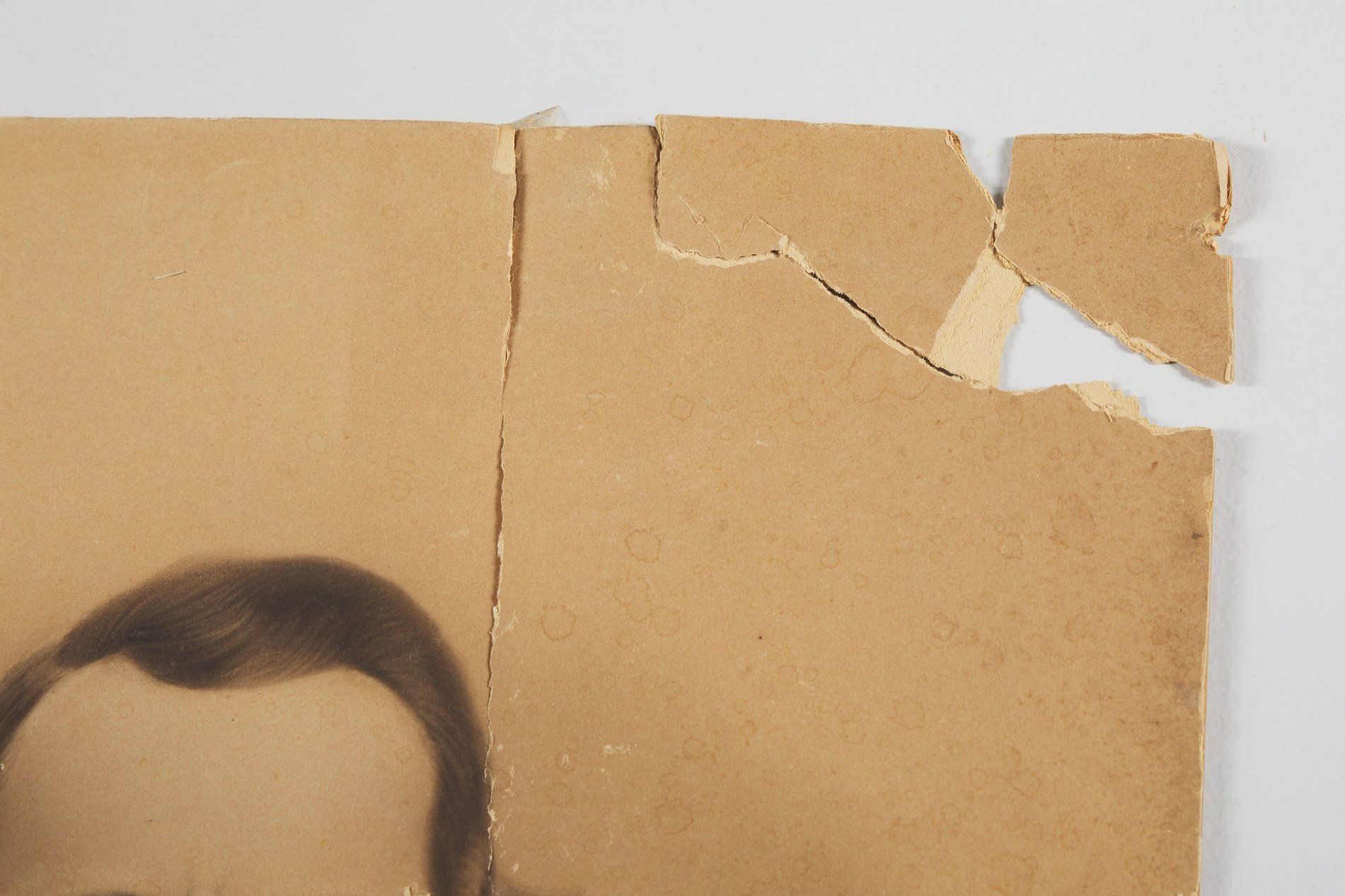Antique photography presents a challenging set of condition issues for any paper conservator. They are inherently delicate and often have significant inherent vices. Inherent vice - also known as an inherent fault - is the object's likelihood of deterioration because of the qualities of the materials initially used, not because of anything that happened to the artwork during its lifetime.
Before treatment
As is often the case with antique photography, this Portrait of a Man was mounted to an acidic board. The emulsion layer of the photograph had become darkened and embrittled with age. The emulsion layer was delaminating from the mount board. The acidity of the mount board had left it brittle, and there were fractures throughout, handling dents, areas of loss, and detached fragments with surface skinning. Surface skinning is when a tear results in a thinned portion of paper along the tear line.
Detail of fractures, tears and surface skinning.
There was also evidence of previous water exposure, with water spots on the surface. Pressure-sensitive tapes (the type of tape used commonly in the home) were also present on the mount's verso. Some of the tapes were now visible on the recto through the fractures.
Detail of water spots before treatment
Detail before treatment showing pressure-sensitive tapes from a previous repair attempt.
Verso before treatment
The first step in treatment was to remove the pressure-sensitive tapes using appropriate manual techniques carefully. Once removed, the fragments were properly realigned. The tears were repaired using Japanese Kozo paper and wheat starch paste. The paper conservator filled areas of loss using appropriate weight mending paper to emulate the surrounding areas.
Once the pressure-sensitive tapes were removed, the fragments were prepared for reattachment.
Treatment in progress; the lighter areas are filled loss areas which would be toned to integrate with the mount.
This conservation campaign will be noticeable on the verso, where the tears are being supported from the reverse with appropriate weight paper and adhesive.
Verso after treatment
Verso detail after treatment
On the recto, the fill areas, losses, scratches, and stains were retouched by the paper conservator to integrate areas as best as possible. The water spots were selectively reduced, and the mount was treated with a non-aqueous deacidification spray. While the areas of compensation will be visible in a critical light, this is due to the nature of the work and condition issues. Compensation is always carried out so that the eye is no longer distracted by the damage, and the focus will be on the image areas as it should be.
After Treament
Once conservation treatment was complete, the photograph was assembled with an archival 4-ply mount. The piece was raised in an archival sympathetic 4-ply mat to conservation standards and was engaged with a sympathetically toned 4-ply mat to border and enhance the image. The photograph was reframed with Museum Glass, a conservation grade, anti-reflective glass that protects against UV light rays to protect the surface for the foreseeable future. Now professionally installed in the new frame, this Portrait of a Man can be safely on display and appreciated by its owners.
Before Treatment
After Treatment and Framing











